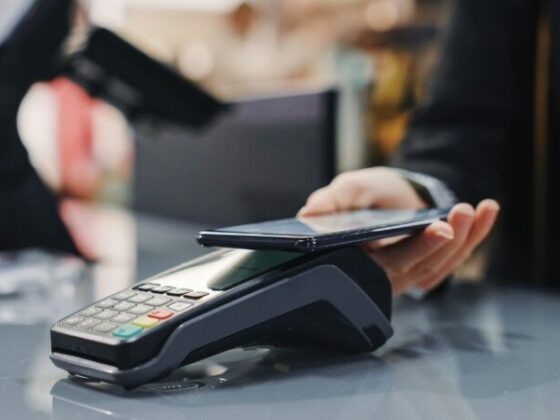
As holidaymakers prepare for long-awaited summer holidays, one factor is silently reshaping how travellers choose between brands: the quality of the experience they receive throughout their journey. This isn’t just the polished version seen in brochures, but the real, lived and felt journey that spans far beyond the transaction and continues long after travellers return from their holidays.
In a world where travel disruptions, high expectations and rapid decision-making define the tourism landscape, customer experience has changed from being a value-add to becoming the value proposition itself. Seamlessness, context, speed and empathy are now non-negotiables expected by travellers.
But how can travel organisations respond, not just to what customers say they want, but to their unspoken needs and desires for more meaningful journeys this summer? The answer lies in executing better experiences across the entire travel timeline: before, during, and after the trip.
Before the trip: Understanding intent, not Just itinerary
The pre-trip stage isn’t just about helping someone book a flight or hotel; it’s about understanding intent and responding before a decision is even made. Today’s travellers are digital natives who expect brands to meet them halfway, offering relevant suggestions before they even realise what they want. Recent Twilio data revealed that 71% of consumers will walk away from purchases if the experience doesn’t feel relevant.
The majority of travellers abandon bookings due to outdated interfaces, irrelevant offers, or having to repeat themselves across different communication channels. This is where travel brands need to rethink how they listen. Patterns such as revisiting the same destination several times, lingering on certain dates, or adding excursions without checking out are not just data points, they’re signals of intent.
Customer Experience as a Service (CXaaS) platforms are helping to close the gap. By bringing together fragmented data from websites, apps, call centres, and more, these tools can detect patterns and trigger relevant, real-time responses, without overstepping the line into intrusion.
Think of a personalised push notification nudging a traveller to complete a booking they started on their lunch break, or an SMS offering a subtle discount on a favourite resort spotted repeatedly over the past week. These small moments aren’t about persuasion, they’re about recognition, helping to build trust even before a booking takes place. While trust is on the rise, it remains fragile: 90% of consumers trust at least some brands, but only 15% say they “absolutely” trust them with their data.
Think of a personalised push notification nudging a traveller to complete a booking they started on their lunch break, or an SMS offering a subtle discount on a favourite resort spotted repeatedly over the past week. These small moments aren’t about persuasion; they’re about recognition, and they help build trust before a customer has even booked. Trust is rising, but remains fragile: while 90% of consumers trust at least some brands, only 15% “absolutely” trust them with their data.
During the trip: Proactive, not just reactive
Travel is filled with factors beyond anyone’s control, such as delayed trains, overbooked hotels, or unexpected weather. While these disruptions are often unavoidable, what travellers remember is how (and how quickly) they were handled. Leading airlines now use proactive communication tools, such as SMS, WhatsApp, and real-time alerts to keep passengers informed and reassured during disruptions such as delays or gate changes. It’s a clear reminder that the experience is shaped not just by what goes wrong, but by how well brands respond.
Reactive service is no longer enough. Top organisations are embedding agility into their operations, using data-driven systems that can predict and mitigate disruptions before they escalate.
For instance, if a train delay is detected, smart systems can automatically notify connecting hotels, suggest alternate routes, or offer real-time updates, all without the traveller needing to make a call. These aren’t futuristic scenarios; they’re becoming today’s best practice.
AI-powered assistants are increasingly playing a role here, not by replacing human contact, but by triaging routine requests and surfacing urgent issues to the right people. This ensures human agents are empowered to focus on what really matters: the emotional peaks and valleys of a journey.
When those agents step in, they’re not starting from scratch. They have context, where the customer is, what they’ve booked, how they’ve responded to past situations, so the conversation begins with empathy, not a list of identity-verifying questions.
After the trip: Memories that turn into momentum
The return journey no longer marks the end of the customer lifecycle, it’s the beginning of the next. A smart post-trip strategy, like recognising past experiences or suggesting relevant destinations, shows travellers they’re seen as individuals, not just bookings. It’s not about algorithms replacing human touch, but using data to make people feel remembered.
To give one example, holiday rental agency Sykes Cottages has achieved a 98% call answer rate during seasonal surges and reduced its cost per contact by 38%, thanks to investing in technology that better routes inbound calls and contacts. Notably, their IVR dropout rate also fell from 26% to 12%, a strong indicator of improved customer satisfaction and the effectiveness of voice as a channel.
From touchpoints to trajectories: Designing for feeling, not just function
What connects all these moments isn’t technology, it’s execution. The ability to string together dozens of small actions, across departments and channels, into a journey that feels personalised to each traveller.
The best travel brands aren’t the ones with the most complex tech stacks, they’re the ones that use their tools to humanise the experience. They understand that every interaction (whether digital, verbal, or environmental) is an opportunity to reduce stress, spark joy, and build a trustful relationship.
Travel is booming and so is the opportunity to rethink what the journey feels like. Not just in the moments that go smoothly, but in the way brands respond when things don’t. That’s the true test of a seamless experience: one that isn’t just seen, but felt.








